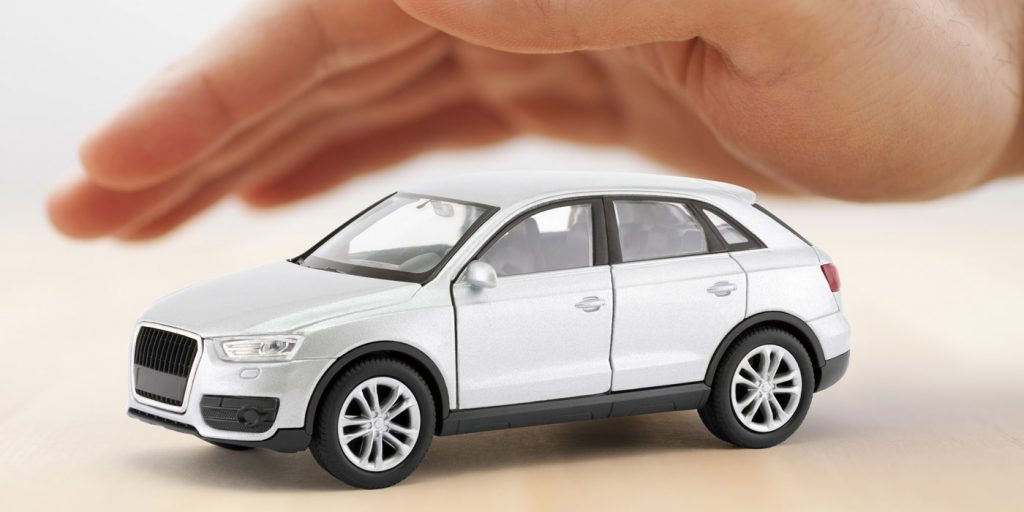Errors & Delays, What You Don’t Know Will Get You!
Last month, I highlighted the safety recall legal and regulatory environment, along with what dealers can do to protect themselves and their customers. This month, we’re going to look at the errors and delays in the safety recall “ecosystem,” which make it difficult for even the most diligent dealer to stay ahead of the situation, let alone stay out of trouble.
The single biggest issue we see when discussing safety recalls with potential clients: They think they are covered. They are not. They are at the end of the tail being wagged by the OEMs and NHTSA.
Why? Because there are significant data errors and timing delays in the safety recall information that dealers rely on.
The Safety Recall Ecosystem
OEMs are the source of a vehicle’s potential safety recall repair status. The graphic below shows the major sources of safety recall status information, some of which are available publicly and through OEM dealer communications systems (DCSs)–that are exclusive to each OEM franchised dealer network.
The Broken Safety Recall System: Errors
It would reduce confusion if these sources reported the same safety recall information at the same time, but because there is significant complexity in safety recall reporting and with synching publication schedules across all OEMs and NHTSA, that is far from the case. Errors and timing issues are the norm.
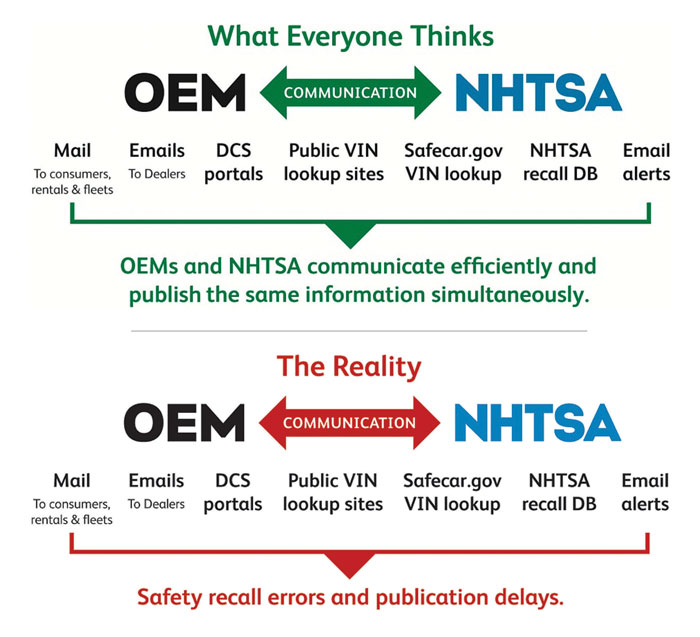
When we started the company and first downloaded NHTSA’s safety recall database, we found a 30% error rate! We thought, this couldn’t be. But, it was true. Since then, we have uncovered errors and delays throughout the safety recall ecosystem: Not only from NHTSA’s recall database, but also false negatives from SaferCar.gov (they say a vehicle is clear of recalls, when we know it’s not), VHRs, other recall service providers and even the OEMs’ own Dealer Communication Systems (DCSs)!
Unless you are checking multiple sources on every vehicle every day, you are likely missing recalls. This not only applies to off-brand (where most dealers rely on SaferCar.gov or a VHR), but for in-brand as well.
Provided below are just a couple actual examples of the types of errors that we have uncovered. We have a very large compilation of these: As proof-points, and to gather statistics.
Example 1:
SaferCar shows this 2016 Nissan Altima as clear. Nissan says it has an open safety recall:
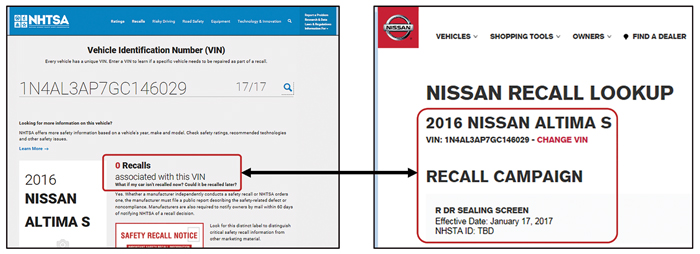
Example 2:
Mercedes-Benz states that only 2005–2006 C-Class vehicles are affected by 15V56000, but a 2011 E-Class is.
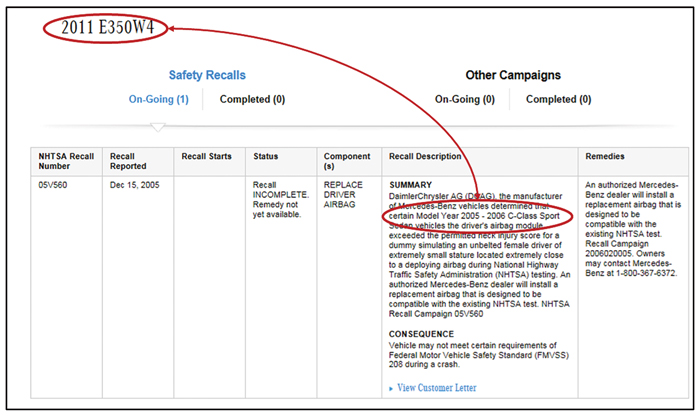
Example 3:
Ford tells their dealers about a safety recall, but identifies it as a service campaign, not safety recall, on their public VIN-verification site.
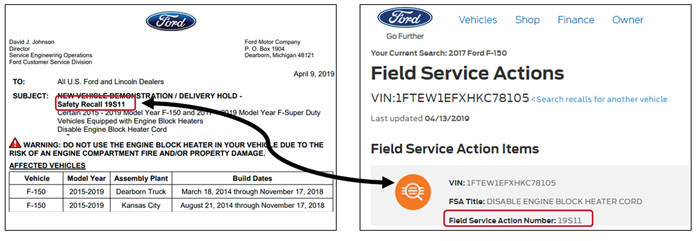
Example 4:
GM identifies a safety recall in their DCS, but shows it clear to the public/non-GM dealers
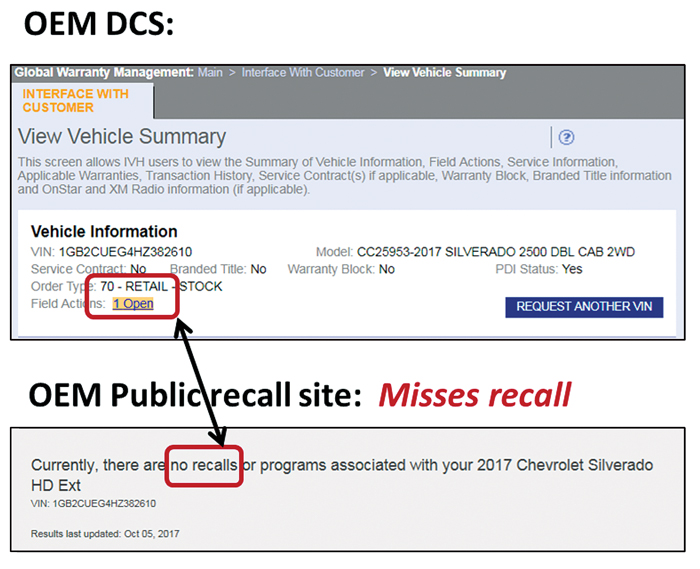
Example 5:
A VHR (vehicle history reporting) company misses 37.5% of vehicles (5 out of 8) with open safety recalls

Unless you deal with recalls every day, checking multiple sources and having automated self-auditing processes set up, it is nearly impossible to know the true safety recall status of a vehicle at any one time.
Consequently, dealers are buying and selling vehicles with open safety recalls and — without a comprehensive system in place — don’t know it.

